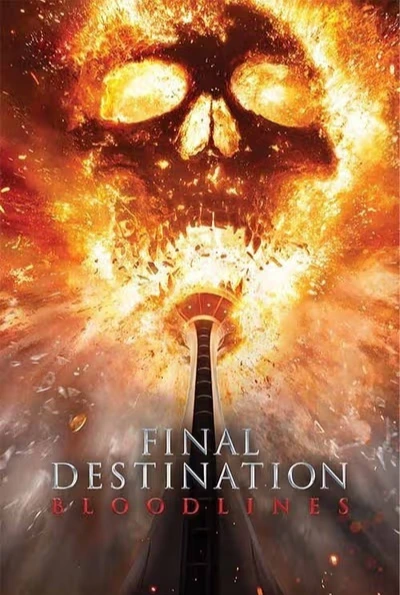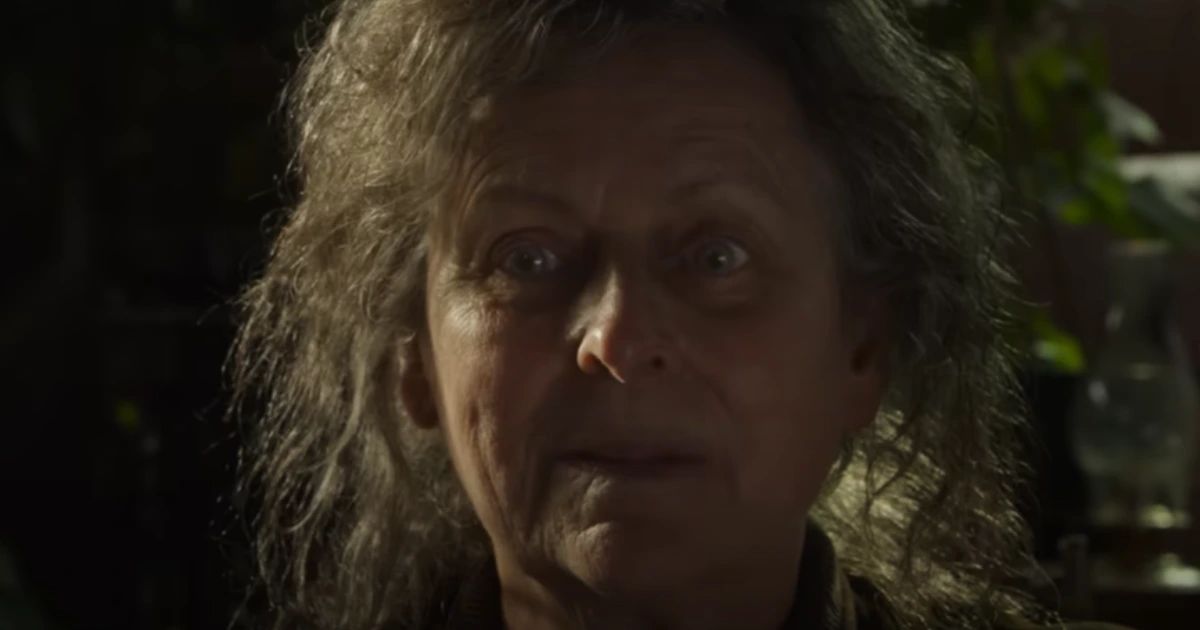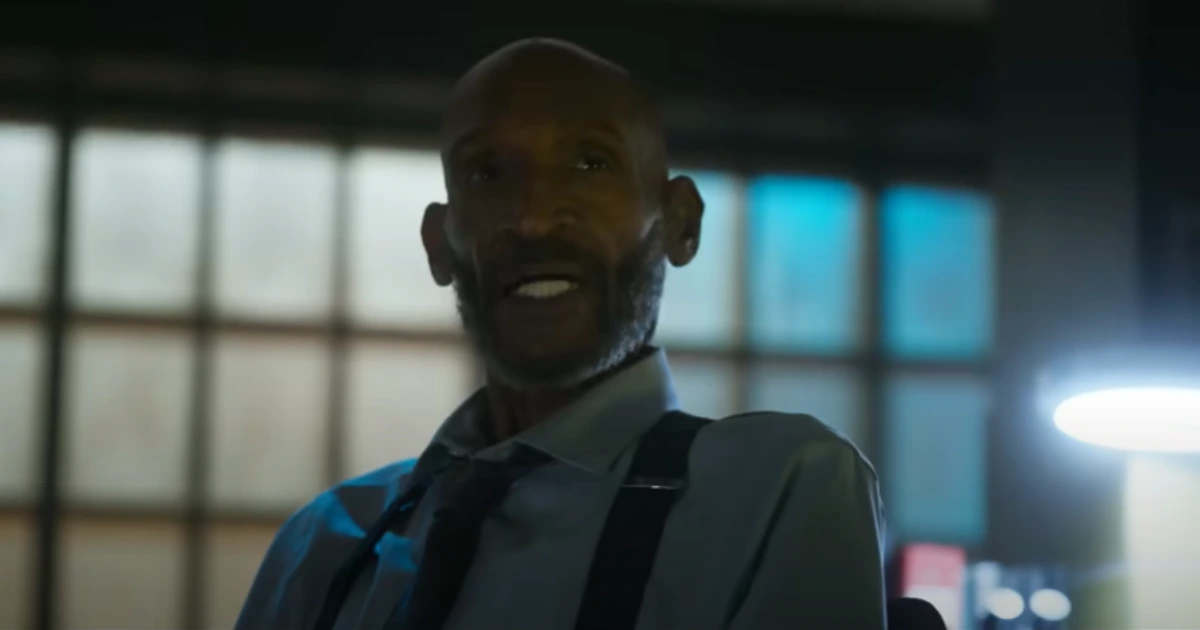Final Destination 2025: Bloodlines – Is Death Itself Getting a Reboot?

- Release Date : 15 May 2025 Final Destination Release Date
- Writer : Guy Busick and Lori Evans Taylor
- Director : Zach Lipovsky and Adam Stein
- Producer : Jon Watts with assistance from Craig Perry, Sheila Hanahan Taylor, Dianne McGunigle, and Toby Emmerich.
It’s only fitting that a horror franchise obsessed with the inevitability of death would return with the precision of a ticking time bomb. “Final Destination: Bloodlines”—the first installment in a decade—arrives like a well-wound clockwork nightmare, each moment meticulously engineered for maximum dread.

This blood-slicked masterclass in fatalist slapstick doesn’t just acknowledge the audience’s familiarity with its deadly formula—it revels in it. The film dares you to spot every looming hazard, every smug or oblivious character destined for a spectacular demise, and every mundane object poised to spark a chain reaction of carnage. It’s a vicious, thrilling ballet of inevitability, and you won’t be able to look away.

Are these movies deep? In their own twisted way, absolutely. Final Destination doesn’t preach—it provokes, using its signature chain-reaction Destruct-O-Ramas to spark surprisingly profound questions about fate, free will, and cosmic justice.

Every meticulously crafted death scene, drenched in cinematic dread and dark artistry, becomes a macabre meditation on whether we control our destinies or are just passengers on death’s carefully plotted route. It’s philosophy by way of splatter, and somehow, it works.
Co-directed by Zach Lipovsky and Adam B. Stein, “Bloodlines” lives up to its name by weaving a multigenerational tale of fate, doom, and legacy. The horror begins in 1959, when the family matriarch embarks on what should’ve been a romantic, life-changing evening—only for it to spiral into disaster. The setting? A sleek, newly opened tower eerily reminiscent of Seattle’s Space Needle, a structure so ominous in design that it practically screams collapse from the moment it appears onscreen. The suspense doesn’t just come from what will happen, but when—and how. And as the tension builds, we realize that Iris’s unease isn’t just about vertigo; it’s a premonition of something far worse.
As Iris (Brec Bassinger) and her beau Paul (Max Lloyd-Jones) step into a creaky, nerve-jangling elevator en route to the tower’s rooftop restaurant, the suspense tightens with surgical precision. The filmmakers gleefully overload the screen with ominous close-ups—wobbling bolts, frayed cables, flickering lights—each one a red flag practically shouting its future role in the chaos to come. The buildup is so over-the-top, so drenched in distorted visuals and jarring sound effects, that it’s both terrifying and hilariously self-aware. Every shot doesn’t just foreshadow disaster—it grandly announces it like a twisted magic trick you can’t wait to see go horribly wrong.
Remember “Chekhov’s Gun,” the storytelling rule that anything given a spotlight early on must eventually pay off? Final Destination: Bloodlines takes that principle and turns it into a brutal scavenger hunt. Here, we get Chekhov’s Beer Bottle, Chekhov’s Soul Band, Chekhov’s Nose Ring, Chekhov’s Garden Hose, Metal Rake, Trampoline, Chekhov’s Ice Water, Ice Bucket, and Glass Shards—plus a Logging Truck, a Flickering Halogen Light, and even an MRI Chamber, all waiting patiently in the wings for their moment of mayhem. And that’s just scratching the surface of what could be called Chekhov’s 2025 Murder Object Bag. When it comes to unexpected “gifts,” Death is more generous—and more sadistic—than Santa Claus ever dreamed of being.
Like many doomed heroes in the Final Destination 2025 Movie universe, Iris foresees the gruesome disaster barreling toward her—but, true to franchise form, foresight doesn’t equal escape. Her death is spectacularly orchestrated, yet ultimately revealed to be part of a vivid nightmare. The dreamer? Her granddaughter Stefani (Kaitlyn Santa Juan), who’s haunted nightly by visions of the tower’s collapse. It’s a chilling baton pass across generations, where trauma, premonition, and death itself are inherited like cursed heirlooms.
Wait—granddaughter? Does that mean Grandma somehow survived the original catastrophe? Could she still be alive, lurking in the shadows with vital, chilling exposition to share? And what about the sprawling extended family—Stefani’s younger brother Charlie (Teo Briones), cousins Julia (Anna Lore), Bobby (Owen Patrick Joyner), Erik (Richard Harmon), and the ever-watchful Uncle Howard (Alex Zahara) and Aunt Brenda (April Telek), who sternly warn Stefani and Charlie to stop digging into the mystery of their long-vanished mother, Darlene (Rya Khilstedt)? Sounds like fertile ground for a dark family reunion—and a setup too deliberate to ignore. After all, you don’t cast an actress and drop her name in parentheses unless she’s got unfinished business with Death.
It would be a shame to spoil the fun with too many details, because the film’s wickedly inventive deathtraps and sly plot twists are best experienced with fresh eyes. Just know this: when the tower falls, it leaves a solid dozen names on Death’s to-do list. Erik’s tattoo parlor isn’t there to teach us how to ink a tramp stamp—it’s something far more sinister. And if the movie keeps mentioning trains, it’s not because a wholesome field trip to the railroad museum is coming. Every setup here is a ticking time bomb, and the payoff is as clever as it is delightfully cruel.
At their core, these films are anthology-style meditations on fate—grim collections of inevitable tragedies punctuated by philosophical musings on free will and randomness. The unifying thread? If Death tags you and you somehow slip through the cracks, it won’t just let it go. It will hunt you—and everyone connected to you—relentlessly, patiently, until the cosmic ledger is balanced. Picture an obsessive accountant jet-setting across the globe to correct every last bookkeeping error, or The Seventh Seal reimagined with Death as a deranged Rube Goldberg engineer, orchestrating multi-step catastrophes with the precision of a sadistic watchmaker.
There’s a sharp sense of craft and twisted wit running through every frame, all in service of a style that echoes vintage Sam Raimi—think Darkman and The Evil Dead—where slapstick and splatter collide in gloriously unhinged fashion. It’s like watching the Three Stooges, if their eye-pokes ended in actual eyeball extractions, and Curly showed up wielding a chainsaw to make it official. From the very first scene, this movie doesn’t just flirt with going too far—it sprints past the line, cackling all the way, gleefully pushing gore and absurdity to their creative extremes.
The film also excels at what my dear Judith calls “visual colloquialisms,” turning everyday sayings into striking images and clever sight gags. Take the penny from the opening flashback—it keeps cropping up like a stubborn bad penny, refusing to be ignored. And speaking of pennies, while tradition says you place them on the eyes of the dead to pay their passage into the underworld, these filmmakers boldly skip that ritual, inviting dread instead. Toss a penny from a dizzying height, and it may seem like a “penny from heaven”—right up until it leaves a much less heavenly impression on your skull. Remember when older relatives offered you “a penny for your thoughts”? For Stefani, those innocent words have twisted into haunting nightmares.
There’s a scene where a bystander plays out the old rhyme, “See a penny, pick it up, all day long you’ll have good luck,” cleverly weaving in visual nods to “what goes up must come down” and “on the wrong track.” The soundtrack leans into playful self-awareness, dropping needle-drops so delightfully cheesy they feel like inside jokes shared between the film and its audience—Etta James’ “Something’s Got a Hold On Me,” Air Supply’s soaring “Without You” (complete with that agonized “I can’t liiiiiiive…”), and Kelly Clarkson’s empowering “Stronger (What Doesn’t Kill You).” Whether intentional or not, the film also had me thinking of Christopher Reeve’s Somewhere in Time—a romantic, heartfelt film that, fittingly, features a penny too. If you get the chance, it’s well worth the watch.
I digress. Beneath the gore and chaos, Bloodlines carries a sober, thoughtful subtext—one that echoes, but softens, the complex mind games of sci-fi and fantasy tales about parallel timelines and alternate universes. It toys with concepts like “anchor beings” and “canon events,” questioning whether we can truly change the future or if every choice merely reroutes us to the fate the cosmos already has mapped out. Sure, you could argue that those tagged for eventual deletion by Death might save everyone time by just giving in. But where’s the fun in that? Without the desperate struggle, these movies would barely last 25 minutes—and lose all their thrilling, twisted charm.
Speaking of the grave, the late, legendary Tony Todd—who embodied funeral home owner, lore keeper, and franchise icon William Bludworth—makes his final, haunting appearance in Bloodlines, released just six months after his passing from cancer. This isn’t just a fitting farewell to both the character and the man; it’s one of the most powerful performances ever delivered by an actor fully aware of his mortality. Todd’s deep, rumbling voice emerging from a frail, suffering frame is more chilling than any of the film’s gruesome set pieces, yet also deeply inspiring and profoundly moving. A consummate professional to the end, he gave us one last unforgettable thrill—and left a legacy that will endure.
But Tony Todd’s cameo is far more than a final IMDb credit. What he achieves alongside his fellow actors and crew is nothing short of profound. He channels the certainty of his own mortality into a powerful artistic statement, enriching the entire franchise by linking the reality of death with its spectacular, cinematic portrayals. Todd knew when he stepped onto set that his time was limited—and he also knew we’d recognize that immediately. Yet he embraced it all with astonishing control and grace. Even weakened, he commanded the screen with the undeniable presence, strength, and voice that left us in awe. I wouldn’t be surprised if Death himself asked for Tony Todd’s autograph.
